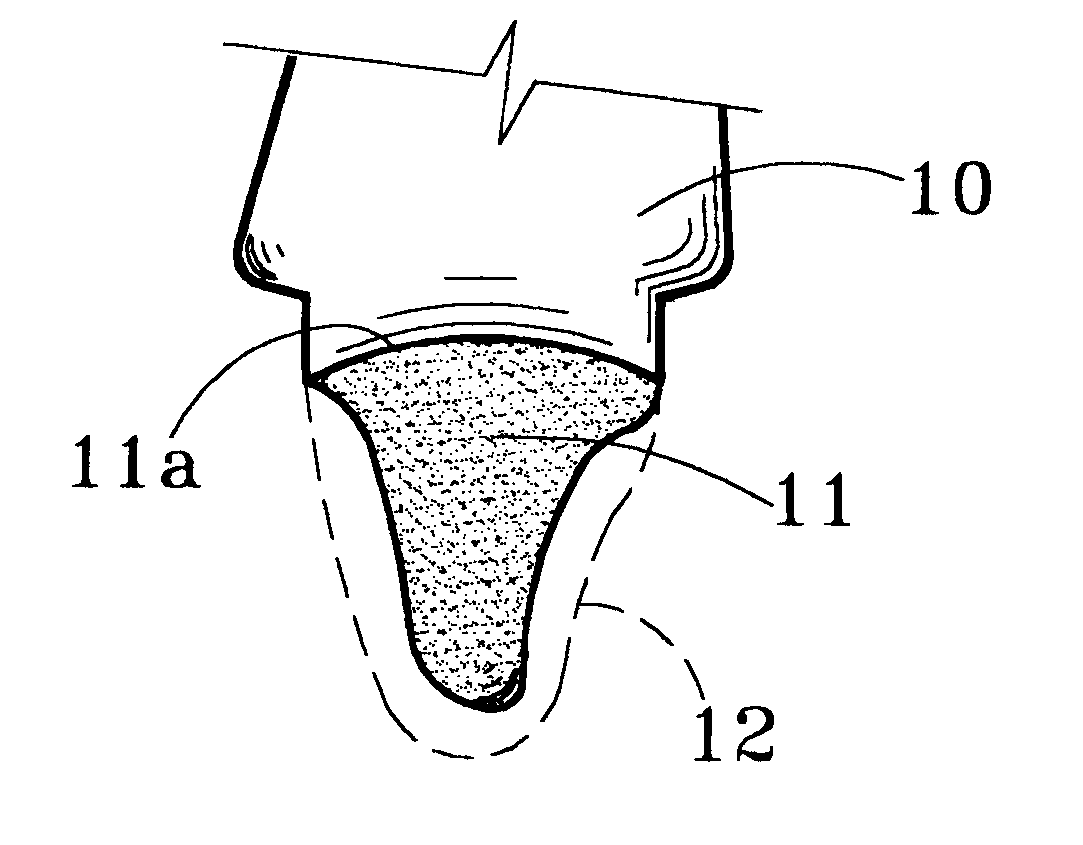Method of forming tooth restoration
a technology of tooth restoration and forming method, which is applied in the field of tooth restoration, can solve the problems of preventing the use of conventional refractory investment materials for fabricating high alumina based restorations, reducing the efficiency of porcelain restorations, so as to eliminate the tendency for porcelain to crack or debond or greatly reduce the effect of debonding
- Summary
- Abstract
- Description
- Claims
- Application Information
AI Technical Summary
Benefits of technology
Problems solved by technology
Method used
Image
Examples
Embodiment Construction
The present invention provides a method of forming porcelain tooth restorations. Such restorations include items referred to in dental practice as: inlays, onlays, crowns and veneers. The method of the present invention is suitable for forming any such items. However, for purposes of illustration, the method of the present invention will be described in forming a porcelain crown to be placed on a tooth structure 1 illustrated in FIG. 1. In FIG. 1, the tooth structure 1 is illustrated as being between two other teeth 2 and 3 extending from the gum 4 of a patient. It is presumed that the tooth structure 1 has been dentally prepared to receive a tooth restoration (crown) so that the tooth structure 1 and the crown to be placed thereon will approximate the original tooth.
The initial step of forming a porcelain restoration in the method of the present invention, as well as the prior art, is the preparation of a negative impression of the tooth structure 1 on which a tooth restoration is ...
PUM
 Login to View More
Login to View More Abstract
Description
Claims
Application Information
 Login to View More
Login to View More - R&D
- Intellectual Property
- Life Sciences
- Materials
- Tech Scout
- Unparalleled Data Quality
- Higher Quality Content
- 60% Fewer Hallucinations
Browse by: Latest US Patents, China's latest patents, Technical Efficacy Thesaurus, Application Domain, Technology Topic, Popular Technical Reports.
© 2025 PatSnap. All rights reserved.Legal|Privacy policy|Modern Slavery Act Transparency Statement|Sitemap|About US| Contact US: help@patsnap.com


